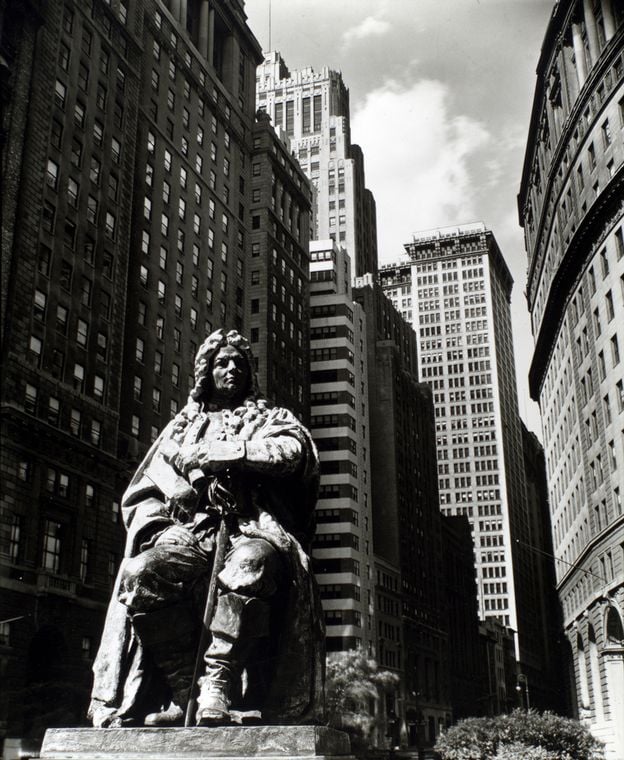
A seven-foot-tall bronze statue of former New York mayor Abraham de Peyster, which has been repeatedly evicted from various location across the city, may finally have a permanent home at Thomas Paine Park in Foley Square, reports the New York Times.
Mayor from 1691–94, de Peyster, born in the Netherlands, left a sound political legacy, helping the poor and donating the land where Federal Hall was built, and where George Washington later inaugurated as the nation’s first president. Despite its subject’s place in history, George Edwin Bissell’s statue of de Peyster, commissioned by the politician’s great-great-great-grandson, John Watts de Peyster, and completed in 1895, has had a difficult time finding a resting place.
Its original proposed home of Battery Park was met with opposition (“We have gone too far in park statuary already,” complained a New York Times editorial. “Better fill up the hole and find another place for de Peyster.”), after which the statue became somewhat itinerant. Subway renovations forced him to leave Bowling Green in 1972. Four years later, he popped up in Hanover Square, until he was displaced 10 years ago in favor of a 9/11 memorial to British victims of the attack.
“We would like to have him where we could visit him,” the former mayor’s descendent, James de Peyster Jr., told the Times in 2003. ”We missed him during the years from 1972 to 1976 when he was in storage on Randalls Island.”
Nevertheless, de Peyster was exiled for the second time, squirreled away in a parks department warehouse while the city struggled to choose a place to display the statue, deciding against dozens of sites, including City Hall Park.
Finally, de Peyster is back on view, allowing New Yorkers to catch a glimpse of the city’s early, forgotten history. On Tuesday, the de Peyster statue was unveiled and rededicated at Thomas Paine Park in Foley Square, on the corner of Lafayette and Worth Streets.
“I am pleased that the city has decided to place the statue in such a nice location, and to sustain some of the early history of Manhattan,” Nick de Peyster, a 10th-generation descendant, told the Times.
“The new site near the courts in Thomas Paine Park is historically appropriate,” added Richard M. Warshauer, leader of Lower Manhattan’s “The Great Crashes of Wall Street” walking tour. “I can now tell my tour guests that de Peyster’s odyssey is finally finished.”